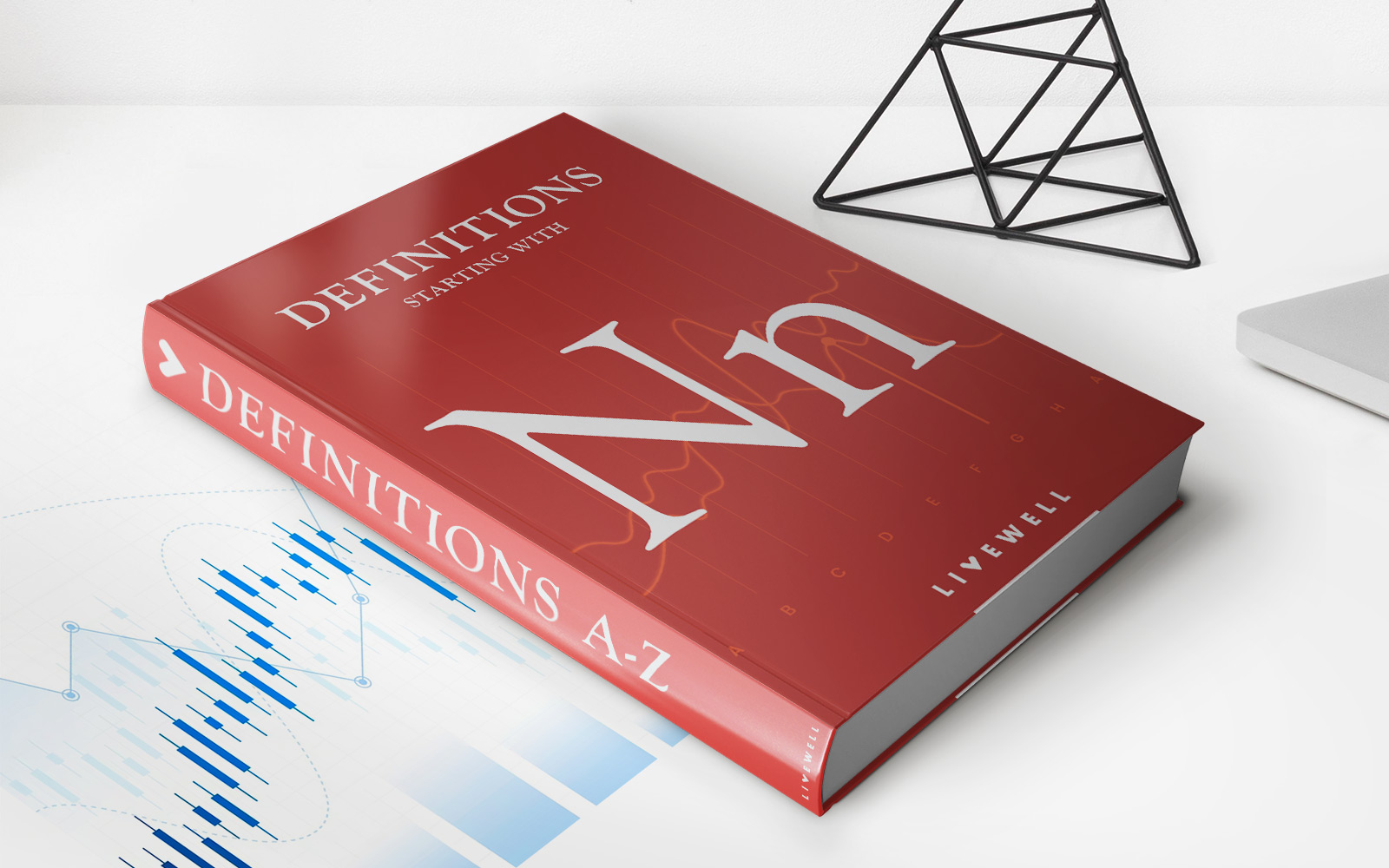

Finance
What Should I Keep Credit Utilization Under
Published: March 6, 2024
Learn the importance of keeping credit utilization under control to maintain a healthy financial profile. Find out the ideal credit utilization rate and its impact on your finances.
(Many of the links in this article redirect to a specific reviewed product. Your purchase of these products through affiliate links helps to generate commission for LiveWell, at no extra cost. Learn more)
Table of Contents
**
Introduction
**
Welcome to the world of credit utilization, a fundamental aspect of personal finance that can significantly impact your credit score and financial well-being. Understanding how credit utilization works and its implications is crucial for anyone seeking to manage their finances effectively and build a strong credit profile.
As you navigate the realm of credit and lending, you’ll encounter various terms and concepts that influence your financial standing. Among these, credit utilization stands out as a pivotal factor in determining your creditworthiness. Essentially, credit utilization refers to the ratio of your credit card balances to your credit limits. This metric holds considerable weight in the calculation of your credit score, making it essential to grasp its significance and learn how to manage it responsibly.
In this comprehensive guide, we’ll delve into the intricacies of credit utilization, explore its impact on your credit score, and provide actionable tips for keeping it under control. Whether you’re new to the world of credit or seeking to enhance your financial literacy, this article will equip you with the knowledge and strategies to master credit utilization and optimize your credit health.
Understanding Credit Utilization
Before delving into the specifics of credit utilization, it’s essential to grasp the underlying principles that govern this critical aspect of personal finance. At its core, credit utilization reflects the proportion of your available credit that you are currently using. This ratio is calculated by dividing your total credit card balances by your total credit limits and is typically expressed as a percentage.
For instance, if you have a total credit limit of $10,000 across all your credit cards and carry a combined balance of $2,000, your credit utilization rate would be 20%. This figure serves as a key indicator of your credit management habits and financial responsibility, influencing how lenders perceive your creditworthiness.
Understanding credit utilization involves recognizing its implications for your financial standing. High credit utilization, indicating that you are using a significant portion of your available credit, can raise red flags for lenders and potentially lower your credit score. Conversely, maintaining a low credit utilization rate demonstrates prudent financial management and can positively impact your creditworthiness.
Moreover, credit utilization is not solely determined by your overall utilization rate. Individual card utilization also plays a role in shaping your credit profile. Even if you have multiple credit cards, the utilization of each card and the aggregate utilization across all cards are factored into the assessment of your creditworthiness.
By comprehending the nuances of credit utilization and its multifaceted nature, you can gain insight into how your financial behaviors and credit card usage influence this pivotal metric. Armed with this understanding, you’ll be better equipped to make informed decisions and take proactive steps to manage your credit utilization effectively.
The Impact of Credit Utilization on Your Credit Score
Credit utilization exerts a profound influence on your credit score, playing a pivotal role in shaping your overall creditworthiness. This metric is a key component of the FICO scoring model, which is widely used by lenders to assess the risk associated with extending credit to consumers.
When evaluating your credit utilization, credit scoring models consider both your aggregate utilization across all credit accounts and the individual utilization of each account. Maintaining a low overall utilization rate, ideally below 30%, is generally advisable to safeguard your credit score. Exceeding this threshold can signal to lenders that you may be overleveraged and potentially unable to manage additional credit responsibly, thereby posing a higher risk.
High credit utilization can have a detrimental impact on your credit score, leading to a decrease in your creditworthiness. As your utilization rate climbs, it sends a signal that you are heavily reliant on credit and may be struggling to manage your financial obligations effectively. Consequently, your credit score may suffer, potentially limiting your access to favorable loan terms and impeding your financial flexibility.
Conversely, maintaining a low credit utilization rate can bolster your credit score and enhance your financial standing. By demonstrating restraint in utilizing your available credit and keeping your balances well below the limits, you signal to lenders that you are a responsible borrower capable of managing credit sensibly. This, in turn, can contribute to an improved credit score and open doors to more favorable lending opportunities.
Understanding the impact of credit utilization on your credit score is instrumental in navigating the intricacies of credit management. By recognizing the significance of this metric and its implications for your creditworthiness, you can proactively take steps to optimize your credit utilization and fortify your financial foundation.
What Is Considered a Good Credit Utilization Ratio?
When assessing credit utilization, it’s important to discern what constitutes a favorable utilization ratio. While there is no one-size-fits-all answer, a widely recommended guideline is to strive for a credit utilization rate of 30% or lower. This means keeping your credit card balances below 30% of your total available credit across all accounts.
Maintaining a low utilization ratio, ideally below 30%, is generally perceived favorably by credit scoring models and lenders. This demonstrates prudent credit management and responsible usage of available credit, signaling to potential creditors that you are not overly reliant on borrowed funds. By adhering to this guideline, you can help safeguard your credit score and bolster your creditworthiness.
It’s important to note that while the 30% threshold is commonly recommended, lower utilization rates can yield even more favorable outcomes. Aim to keep your credit utilization as low as possible, ideally below 10% if feasible. By doing so, you convey a strong message of financial discipline and demonstrate that you are effectively managing your credit obligations without becoming heavily indebted.
Furthermore, it’s crucial to consider the impact of individual card utilization in addition to overall credit utilization. Even if your aggregate utilization remains below 30%, high utilization on individual credit cards can still raise concerns for lenders and potentially impact your credit score. As such, it’s advisable to monitor and manage the utilization of each credit card to maintain a balanced and favorable credit profile.
By understanding what constitutes a good credit utilization ratio and striving to keep your utilization rate low, you can position yourself as a responsible and creditworthy borrower. This, in turn, can contribute to the preservation and enhancement of your credit score, providing you with greater financial flexibility and access to favorable credit terms.
How to Keep Credit Utilization Under Control
Maintaining a healthy credit utilization ratio is essential for preserving your credit score and demonstrating responsible credit management. To effectively control your credit utilization, consider implementing the following strategies:
- Regularly Monitor Your Credit Balances: Stay vigilant about your credit card balances and track your overall credit utilization. By regularly monitoring your balances, you can proactively manage your credit utilization and make timely adjustments to avoid exceeding recommended thresholds.
- Avoid Maxing Out Credit Cards: While it may be tempting to utilize your entire credit limit, it’s advisable to avoid maxing out your credit cards. Strive to keep your balances well below the credit limits to maintain a favorable utilization ratio.
- Pay Balances Multiple Times a Month: Instead of waiting for the statement due date, consider making multiple payments throughout the month to keep your balances in check. This approach can help lower your reported balances and contribute to a lower utilization rate.
- Request Credit Limit Increases: Contact your credit card issuers to inquire about potential credit limit increases. By raising your credit limits while maintaining consistent spending habits, you can effectively lower your utilization rate.
- Utilize Unused Credit Cards: If you have multiple credit cards and some carry minimal or no balances, consider using them strategically to distribute your spending and keep individual card utilization rates low.
- Strategically Manage Large Purchases: When planning significant purchases, consider how they may impact your credit utilization. If feasible, spread out the expenses across multiple billing cycles to mitigate the short-term impact on your utilization rate.
By adopting these proactive measures and cultivating disciplined credit management habits, you can exert greater control over your credit utilization and work towards maintaining a favorable ratio. Consistently monitoring your credit balances and implementing prudent utilization strategies can contribute to the preservation of a healthy credit profile and enhance your overall financial well-being.
The Benefits of Maintaining Low Credit Utilization
Maintaining a low credit utilization ratio offers a host of advantages that can positively impact your financial health and creditworthiness. By adhering to prudent credit utilization practices and keeping your balances in check, you can reap the following benefits:
- Preservation of a Strong Credit Score: A low credit utilization rate is instrumental in preserving a robust credit score. By demonstrating responsible credit management and keeping your utilization ratio low, you can bolster your creditworthiness and ensure that your credit score remains favorable.
- Enhanced Access to Credit: Lenders and financial institutions are more inclined to extend credit to individuals with low utilization rates, as it signals disciplined financial habits and a lower risk profile. By maintaining a low utilization ratio, you increase your chances of securing favorable loan terms and credit offerings.
- Reduced Risk of Overleveraging: High credit utilization can indicate that you are heavily reliant on borrowed funds, raising concerns about overleveraging. By keeping your utilization low, you mitigate the risk of becoming overextended and facing challenges in managing your financial obligations.
- Potential for Higher Credit Limits: Responsible utilization practices may prompt credit card issuers to consider increasing your credit limits, providing you with greater financial flexibility. Higher credit limits, coupled with low utilization, can further improve your credit profile.
- Demonstration of Financial Discipline: Maintaining a low utilization rate showcases your ability to manage credit sensibly and exercise financial discipline. This can resonate positively with lenders and reflect well on your overall financial responsibility.
By embracing the benefits of low credit utilization and actively striving to keep your utilization ratio at optimal levels, you position yourself for a stronger financial foundation and improved access to credit opportunities. Consistent adherence to prudent credit utilization practices can yield long-term advantages, fortifying your creditworthiness and paving the way for enhanced financial well-being.
Conclusion
Understanding and effectively managing credit utilization is paramount to maintaining a healthy credit profile and securing favorable financial opportunities. By grasping the intricacies of credit utilization and its impact on your credit score, you empower yourself to make informed decisions and cultivate responsible credit management habits.
Striving to keep your credit utilization ratio low, ideally below 30% and preferably under 10%, can yield a myriad of benefits, including the preservation of a strong credit score, enhanced access to credit, and the demonstration of financial discipline. By monitoring your credit balances, strategically managing your spending, and proactively controlling your utilization rate, you can navigate the complexities of credit utilization with confidence and prudence.
Ultimately, maintaining a low credit utilization ratio is a testament to your ability to manage credit responsibly and exercise financial discipline. By embracing this fundamental aspect of personal finance, you lay the groundwork for a robust credit profile and improved financial well-being.
As you continue your financial journey, remember that knowledge and vigilance are your allies. Stay attuned to your credit utilization, implement prudent utilization strategies, and leverage your understanding of credit management to optimize your credit health. By doing so, you can chart a path towards enduring financial stability and empowerment.














